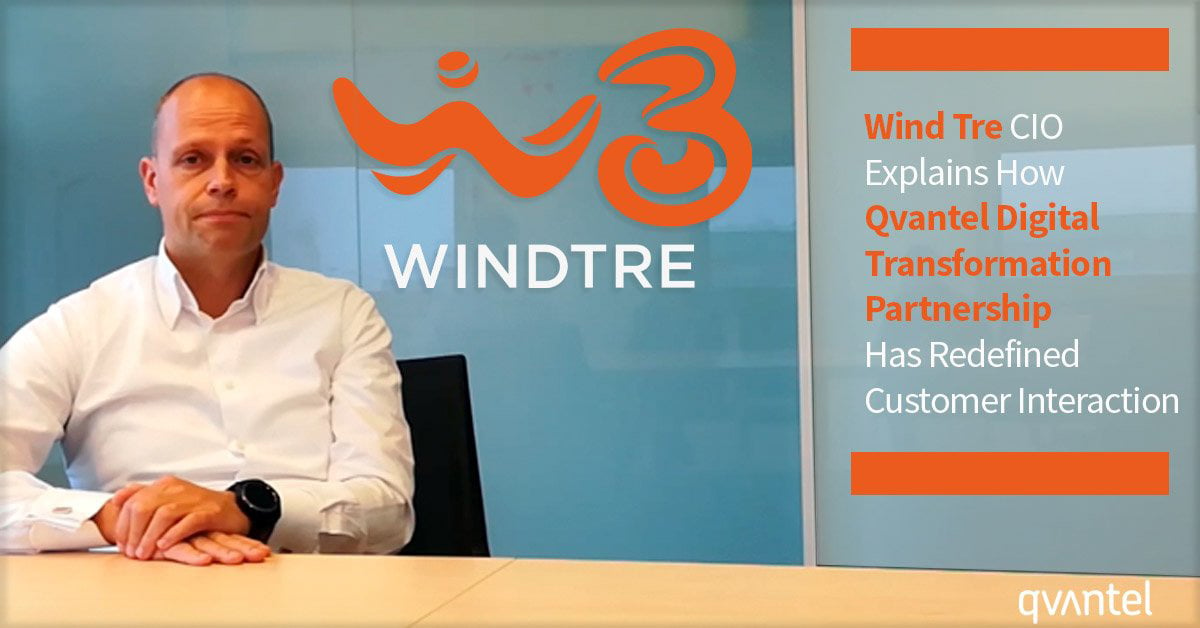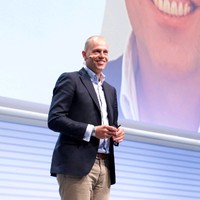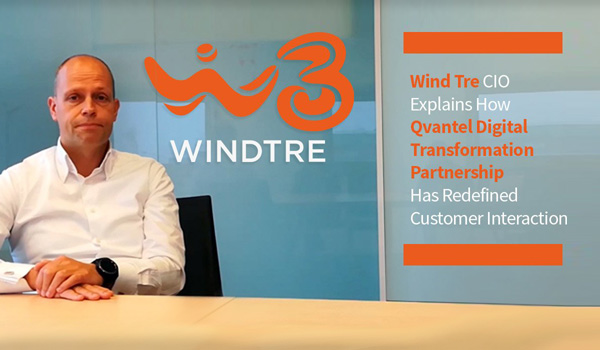
Originally published on VanillaPlus by George Malim
Bringing together separate fixed-line and mobile operators under new ownership is among the most complex integrations a communications service provider (CSP) can undertake. However, for Wind Tre, it provided an opportunity not only to unify operations but to transform the business for the digital era.
There’s an old story of a tourist lost in rural Ireland asking for directions.
“Which way is it to Dublin?” asks the tourist.
“Well, I wouldn’t start from here,” replies the local farmer.
The same is true with digital transformation projects. There’s no ideal place to begin the journey. In fact, perhaps the worst starting point is two previously separate businesses, that utilise different technologies and rely on different systems from different vendors. Yet, that’s what Wind Tre, the Italian CSP formed from the merger of Wind Telecomunicazioni and 3 Italy in 2016, decided to do.
“I was hired to lead a digital transformation,” explains Rob Visser, the CIO of Wind Tre. “If you ask 20 people what that means, you’ll probably get 25 different answers but for us, digital transformation is the redefining of our interaction with our customers. That means customer interaction should be as easy and intuitive as possible. We don’t want to force customers to sign difficult documents, to visit our stores or to receive messages that aren’t relevant.”
“We wanted to build intuitive interaction that is more personalised for our customers so we can share specific offers with them and cut out many of the traditional steps,” he adds. “For that, you need an organisation with a start-up mentality that is able to use an agile way of working. We therefore needed a company that would partner with us in this transformation journey with a huge amount of flexibility, a high level of knowledge, skills and engineering, and as a company already had a vision in its own product and roadmap.”
Qvantel was selected by Wind Tre because it offered these capabilities and appeared ready to commit to the long-term transformation, providing the level of attention that Visser wanted to receive. “With other vendors, it’s very difficult to get their attention,” he explains. “It could take a week to make them aware they have an issue but with Qvantel, the process was steered by a board member and that commitment and dedication really makes a difference for us.”
“I strongly believe that great people get great results and Qvantel was willing to set up and collocate their people and ours in an office in Rome that is 20 metres from our office,” he adds. “Our people and Qvantel’s people sit together, have dinner together and solve problems together.”
Visser, seeing the scale and complexity of the transformation task, was careful to set out a realistic roadmap in the knowledge that there would be bumps along the way. “In hindsight everything is easy but we knew this would be a challenging journey so we were looking for flexibility in a partner and we didn’t want to be constrained by a vendor’s product portfolio,” he says. “The risk we took is that Qvantel was a start-up but that means you can co-create together so it’s a benefit as well as a risk.”
Here Visser took confidence that Wind Tre shareholder, Veon, has made investments in Qvantel and also planned a manageable, staged digital transformation. “Speed of delivery was important but we didn’t shoot for the moon,” he explains. “It’s a prepaid-only solution but prepaid is the biggest market in Italy. We have a defined roadmap and will gradually improve our offer and for that we needed a partner with flexibility. A standard, out-of-the-box product doesn’t work.”
The results are starting to come through. “The biggest benefit is we’re here now with customers on a digital structure that is acquiring customers from all backgrounds with a full online onboarding capability as we envisioned two years ago,” Visser reports. “We have online registration and identification of our customers and have a unified data model of our customer base. As our customer base grows on the Qvantel structure we get more and more insights which enable us to tailor more to the needs of our customers.”
The new approach has broad appeal in the market place. “It’s a fully online and digital offer so we thought we’d pick up students and the youth market but, in fact, we’ve seen momentum across the whole market place,” says Visser. “The oldest date of birth for a customer we’ve seen is 1929 and they managed to activate their SIM online.”
“If I compare us to others, we started our digital transformation a bit late,” he concludes. “But we are the first in Italy to deliver a totally new stack from front to back with full integration and a clearly-defined API framework that delivers the interaction with customers we were looking for. There has been very little pain, way less than we were expecting.”

